
 3:46
3:46
WATCH: Hungarian Symphony Orchestra Interprets Brahms
The Romantic composer, Johannes Brahms, completed a series of compositions called the Hungarian Dances. Enjoy Hungarian Dance no. 5 in this video.

Jukebox Jackpot: 60s to 80s American Country Hits
Music Box: 20 American country hits from the '60s to the '80s.

I've Never Seen Such a Big Collection of Female Composers!
This amazing interactive image will take you to a whole world of wonderful music composed by female composers. There are no less than 110 artists to discover.

Enjoy a Valentine's Slow Dance Party With Your Sweetheart
Enjoy a Valentine's Day classic tunes playlist, perfect for having a slow-dance party.
 3:46
3:46
Watch as Andre Riéu Orchestras a Powerful O Fortuna
Watch another incredible rendition of a classical favorite by the great andre riéu.
 6:15
6:15
John Williams Conducts the Theme Song from “Jurassic Park”
Watch legendary composer enthrall the audience as he conducts the famous theme music from “Jurassic Park”.
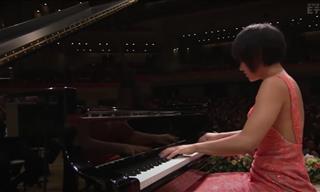 32:22
32:22
If You Love Classical Music, You MUST Hear This Pianist
When it comes to musical talent, it doesn't get better than Yuja Wang. Enjoy this lovely performance by the famed classical pianist.
 8:48
8:48
Relax With a Few Moments of Heavenly Music
Take a few moments for yourself. Close your eyes and let the smile spread on your face as this sweet music spreads in the air.

Elton John’s Hits Absolutely Stand the Test of Time
Sometimes music is all you need to make your day better! Enjoy these timeless hits by Elton John.
 5:41
5:41
These Phenomenal Acrobats Have Terrific Strength
These amazingly strong acrobats are going to effortlessly entertain you.
 35:41
35:41
Watch Carlos Kleiber's Stunning Interpretation of Beethoven
Carlos Kleiber was a legendary conductor who brought an extra level of pizzazz to his performances. Enjoy his interpretation of Beethoven in this video.
 8:58
8:58
Prepare Your Tissues: The Animated Story of Kitbull
Pixar's Kitbull is a beautiful short animation video that has won praise around the world.
 2:57
2:57
Ever Wondered What a REAL Tango Looks Like? So Beautiful!
The dance of Tango is one full of beauty and passion.
 5:33
5:33
Watch These Latin Sister Acrobats Showcase Their Skills!
Take a few minutes to watch the show, you won't regret it!

Music Box: 16 Unforgettable Hits by THE DOORS!
This playlist captures 16 of the most popular songs by The Doors.
 5:15
5:15
Andre Rieu Stirs Our Emotions With his Tribute to Sinatra!
Join Andre Rieu and his orchestra in their tribute to the unforgettable Frank Sinatra, as they perform "My Way".
 10:45
10:45
The Magic Begins When These Wooden Sculptures Start Moving
Kinetic sculptures are moving art pieces that marry physics and art into a mind-boggling combination no one should miss out!
 5:59
5:59
The Garden of Earthly Delights Comes to Life in Animation
The Garden of Earthly Delights is a world-famous painting, notable for its surreal imagery.

This Hungarian Artist Has Perfected the Art of Lace Work
Agnes Herczeg, a Hungarian artist, creates artwork using lace. Some of her best works can be seen here.
 4:48
4:48
Is This a Troupe of Acrobats or Dancers? Sublime!
This Chinese Acrobat Troupe is not just doing stunts, but has wonderful dancers as well. Don't miss this colorful and energetic performance
 2:41
2:41
Some Musical Pieces Just Blow You Away
What a beautiful and touching performance. This song will remain with you for a long time, and may even bring a tear to your eye.
 3:25
3:25
The Song 'Hallelujah' Was Crying Out to Be Sung by Il Divo
Here's a rare rendition that you won't forget in a hurry...
 5:12
5:12
This Performance Took Me Back to a Joyous Time in My Life
Have a listen to this beautiful song...

I Bet You've Never Seen This Kind of Art Before...
Utilizing the best way of recycling, this artist creates beautiful images.
 3:47
3:47
The Incredible André Rieu: My Heart Will Go On...
The wonderful André Rieu once again brings a song to life in a beautiful and touching show of musical prowess. Bravo!
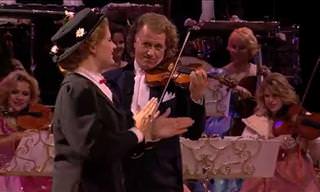 1:59
1:59
Mary Poppins by André Rieu is Pure Delight!
André Rieu and the Johann Strauss Orchestra perform the famous Mary Poppins song, Supercalifragilisticexpialidocious. Watch a video of the performance.
 3:38
3:38
These Men Will Sweeten Your Day With Their Lovely Singing
This group of men wowed the audience with their great version of The Lion Sleeps Tonight.
 3:38
3:38
A Gorgeous Rendition of Nessun Dorma Awaits You...
Witness the intersection of raw talent and pure passion in this unforgettable concert recording of Nessun Dorma

Who Knew Tea Bags Could be Used to Create Great Art?
Ruby Silvious is an artist from New York who uses tea bags as her diary. Check out her amazing work!

What a Funny Way to Illustrate the World's Proverbs!
Artist James Chapman loves proverbs. Here are 20 collected from around the world and illustrated marvelously. The wisdom of these leaps right from the page.
 5:06
5:06
This A-Capella Version of Hallelujah Will Give You Chills
A beautiful remake of a wonderful classic.

You May Need to Give These Pictures a Second Look...
Robert Gonsalves specilizes in making the kind of paintings that make you sigh, then amazed, then thoughtful.

The Bewitching, Romantic Paintings of Daniel Gerhartz
This artist creates beautiful and realistic scenes.
 3:59
3:59
This Mongolian Folk Music Sends Shivers Down My Spine
I had never even heard the Mongol language before, much less its traditional throat singing. I have to say the experience is spellbinding.
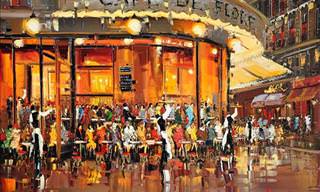
Fall in Love with these Enchanting Paintings..
Kal Gajoum specializes in oil painting and palette knife techniques. Here are his mesmerizing and magnificent paintings.

16 Astonishingly Real Animal Paintings on Stones
Japanese artist Akie Nakata creates incredibly detailed animal paintings on smooth stones. Take a look at her best works.
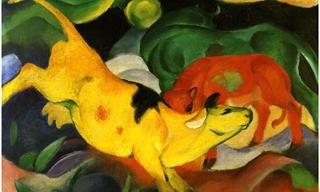
7 Beautiful Animal Paintings by Franz Marc
German artist Franz Marc was known for his abstract animal paintings that explored their spiritual side. Take a look at his best works.
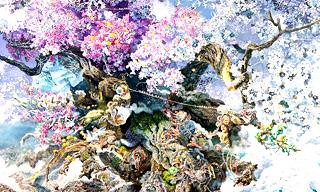
This Drawing Took 3.5 Years to Complete...
The Japanese have to be some of the most resilient people in the entire world. This artist pays tribute to that notion in a vivid visual representation.

MUSIC BOX: These Johnny Cash Songs are Just Wonderful
Johnny Cash uniquely crossed several important genres of all-American music. His influence is impossible to underestimate. Enjoy this selection of 20 greats!
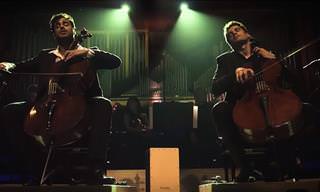 1:48:00
1:48:00
What a Musical Extravaganza! A Concert of Sublime Variety
I adore music, all of it. So I couldn't believe my ears when I heard this talented cello duo wow an audience with classical, film, pop and rock music.
 2:47
2:47
WATCH: A Superb Xylophone Performance by Christoph Sietzen
This beautiful xylophone performance, which is an interpretation of Emmanuel Séjourné's Attraction, will have you utterly spellbound.
 16:00
16:00
Prediction: This Performance Will Leave Your Mouth Open!
This show is unbelievable! The sheer talent and strength these performers have is uncanny!
 4:05
4:05
This Cover of "Mary, Did You Know?" Is Truly Beautiful
Pentatonix, a talented acapella group, are known for making brilliant covers. Their rendition of the classic "Mary, Did You Know?" is hauntingly beautiful.
 7:23
7:23
Some Choirs Know How to Enchant the World With Their Music
You cannot watch this without smiling...

How On Earth Were These Famous Faces Recreated?
Crowd art is certainly extraordinary, but these famous faces were not created how you think they were...
 5:25
5:25
A 5-Year-Old Delivers a Jaw-Dropping Piano Performance!
Meet Jonah Ho, the 5-Year-Old piano prodigy. In this video, he plays Fantasie Impromptu in C-sharp Minor Op.66 of Chopin, and we are STUNNED!

These Oil Paintings Beautifully Capture Colonial America
Contemporary American artist Meadow Gist magnificently re-imagines Colonial America in her beautiful oil painting, sweeping you away to a bygone time.












